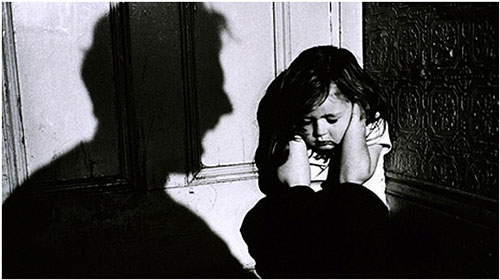
Wars are commonly associated with the most fearsome violence. This is often true, but another reality that deserves more attention is that violence in daily life brings death, serious injury and other tragic consequences on a more massive scale and with continuity. Unlike in war there is generally no valor here, only cruelty; no heroes or patriots here, only victims and perpetrators.
According to data released by the WHO, the number of children in the 2-17 age group who have suffered physical, sexual and emotional violence and neglect in the past one year is staggering—it is one billion (1000 million) or almost one-half of the total number of children in this age-group (for reference also see paper by M. Jones, Amobi and Kress in ‘Pediatrics’). Again according to the WHO, there were an estimated 57,000 deaths attributed to homicide among children under 15 years of age in year 2000, with infants and very young children being at greatest risk!
According to UN Women, in the age-group over 15, as many as 736 million women and girls, or 30% of the total, have been subjected to physical or sexual violence at least once in life. Less than 40% of women who experience violence seek help of any kind. At least 200 million women in 31 countries have undergone female genital mutilation. According to the World Report on Violence and Health (WRVH), studies from Australia, Canada, Israel, South Africa and the USA show that 40-70% of female murder victims were killed by their husbands or boyfriends, frequently in the context of an ongoing abusive relationship. This report also tells us that “each year hundreds of thousands of women and girls throughout the world are bought and sold into prostitution or sexual slavery.”
There were 458,000 homicides worldwide in 2021, 52 per hour. The highest rate of homicides was recorded in the Americas—15 per 100,000 compared to 2.3 in Asia.
According to the latest available data, 176,000 youth in the age-group 15-29 die in homicides in a year, the vast majority being males dying at the hands of males. In this age-group, homicides are the third leading cause of death. Further, as the WRVH tells us, “Studies of non-fatal violence reveal that for every youth homicide there are around 20-40 victims of non-fatal youth violence receiving hospital treatment.”
According to the WRVH, among adolescent males in secondary schools, the percentage reporting involvement in physical fighting in the past year ranged from 22% in Sweden and 44% in the USA to 76% in Jerusalem, Israel. A survey in the Netherlands revealed that 21% of secondary school students admitted to possessing a weapon. A national survey of students in grades 9-12 in the USA found that 17% had carried a weapon in the previous 30 days, 7% in school premises. In a survey of 40 developing countries in schools nearly 42% of boys and nearly 37% of girls were involved in bullying.
In a year over 700,000 people die in suicides. However the number of suicide attempts is many times higher, and these attempts also result frequently in very serious injuries and disabilities (in several countries even in imprisonment). In the USA there are over 1.2 million suicide attempts compared to 48,000 suicides, or the number of suicide attempts is over 24 times higher than completed suicides. The WRVH suggests that attempted suicides may be an even higher multiple of completed suicides among the youth. This report says regarding the ratio of fatal to non-fatal suicides—“in young people under 25 years the ratio may reach 1:100-200.” There are a very large number of other cases of self-harm of various kinds. Suicides are much more common in men than in women.
There is a tragic increase of incidents involving violence and neglect of elderly people. One out of 6 persons in the age-group over 60 are likely to suffer from this. At places situation in nursing homes has been found to be worse.
Violence in the workplace is much higher than is generally realized. The WRVH informs us that in the USA, “official statistics have placed homicide as the second single leading cause of death in the workplace—after road traffic injuries—for men, and the first for women… Research in UK has found that 53% of employees have suffered bullying at work and 78% have witnessed such behavior.” In Sweden repeated acts of workplace violence and harassment have been a factor in 10-15% of suicides.
Looking only or mainly at violence related mortality does not convey a complete sense of the enormous tragedy of violence in daily life. As the WRVH says, “In all parts of the world, deaths represent only the ‘tip of the iceberg’ as far as violence is concerned.” Violence data is often based mainly on police records. However according to the WRVH, a survey in South Africa revealed that 50 to 80% victims of violence who received medical treatment for violence-related injury did not report the incident to the police. In another survey in the USA, 46% of victims who sought emergency treatment did not make a report to the police.
To get a real comprehension of the enormous tragedy of violence in daily life, I would request the readers to think a while about the implications of some of the data presented above in terms of the human distress this caused. Also please remember that a single act of violence causes distress not just to the one victim but to many persons, for example to the near and dear ones of the victim. Clearly there should be a great sense of urgency to make the best possible efforts to reduce and minimize this enormous, continuing tragedy as much as we can.
Bharat Dogra is Honorary Convener, Campaign to Save Earth Now. His recent books include Protecting Earth for Children, Planet in Peril, Earth without Borders, Man over Machine and A Day in 2071.










































